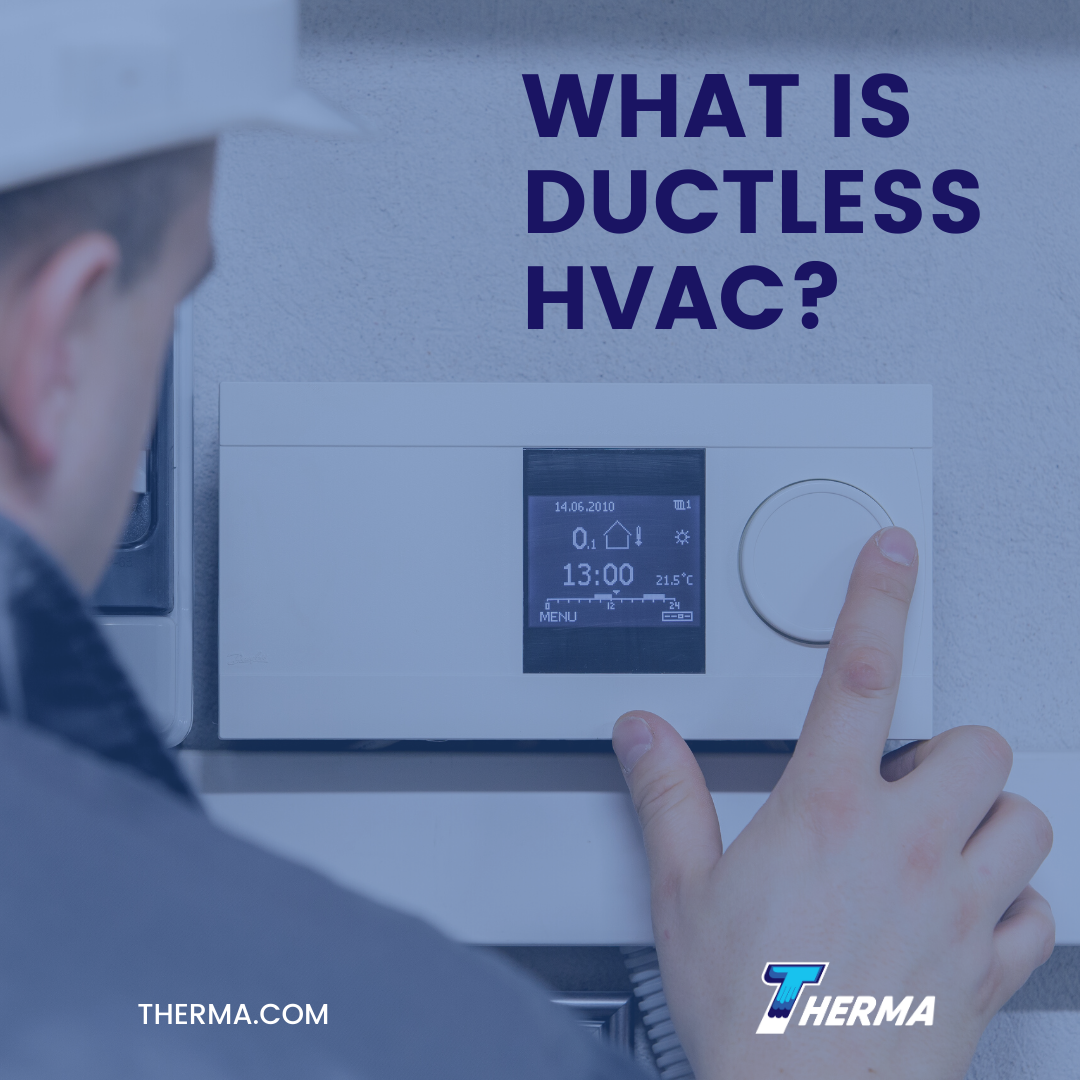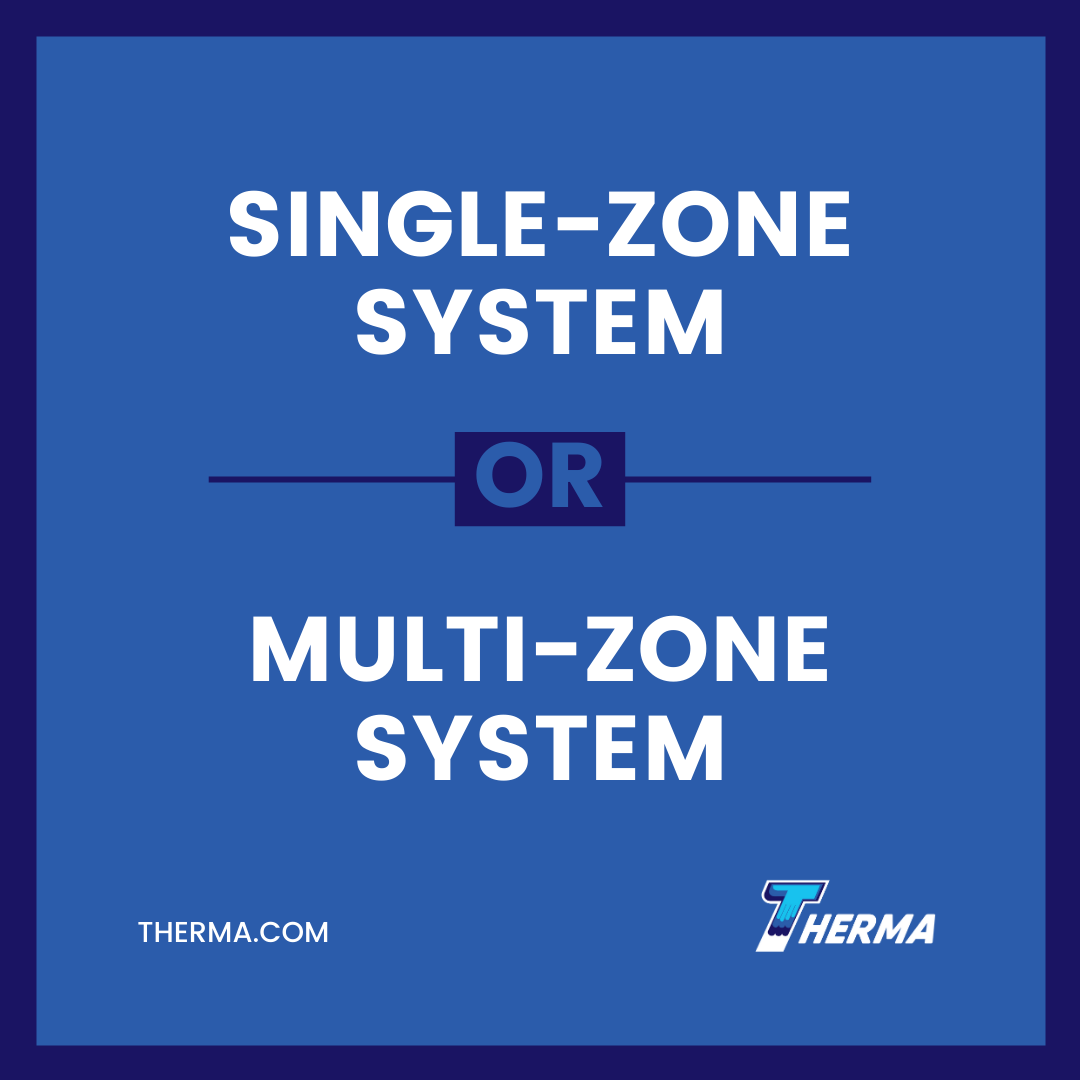Commercial HVAC systems can be configured in many different ways for efficiency, cost benefits and occupant thermal comfort. However, one high-value solution for commercial HVAC, although common in Europe, Asia and South America, is still almost unknown in the United States (making up less than 5% of the market.). This solution is “ductless HVAC,” also commonly known as the mini-split HVAC system.
What Is Ductless HVAC?

A ductless HVAC system is pretty much what it says on the tin: a heating, ventilation and cooling system that operates without ductwork. Instead of a massive compressor and ducting system to service an entire building, ductless HVAC consists of mini-split systems designed to service a single space or zone of rooms in a building.
Components of a Mini-Split System
A mini-split system has two main components:
The Compressor/Condenser
Typically housed outdoors, hung from the wall of the building or stationed on the roof. The role of the outdoor unit is to manage air cooling and vent hot air. It may also have a heat pump for complete HVAC solutions.
The Air Handler
Typically housed indoors, hung from a wall or mounted from the ceiling. The indoor unit’s role is to handle air distribution, control indoor temperature and regulate the fan speed. Control of the unit is done from the inside of the building with a wall-mounted or handheld remote.
These two components are connected via a small hole drilled from the interior to the exterior of the building. The conduit runs through this hole, which houses the power cable, tubing for refrigerant (R410A), suction tubing and condensate drain.
For cooling, the refrigerant sucks the heat outside of the indoor air and transfers it outside. For heating, the heat transfer process is reversed, with heat extracted from the air outside and brought indoors.

Single-Zone Systems
Most often, mini-split AC units are positioned to cool the most significant square footage possible without overtaxing the unit or wasting energy. Single-zone ductless AC units are ideal for cooling large, square or rectangular spaces without many corridors or walls.
Multi-Zone Systems
A multi-zone system can utilize several indoor air handlers connected to a single, large outdoor compressor/condenser if a building consists of several enclosed rooms. Variable refrigerant flow allows each zone to have different heating or cooling levels.
Pros of Ductless HVAC
The primary benefits of mini-split systems center around long term energy and costs savings:
- Mini-split units can both heat and cool;
- There are zero requirements for ductwork installation;
- Cooling cost reductions can reach 30% thanks to eliminated duct temperature loss ;
- Temperature control can be precisely controlled from room to room;
- Each unit has a small footprint and is easy to install;
- Ductless HVAC systems work in most climate zones;
- A single compressor/condenser can power multiple air handling units;
- Improved indoor air quality (IAQ) as a result of higher room air turnover.
With less heat loss and variable refrigerant flow, the cost of running ductless HVAC can be much lower than a traditional ducted HVAC system.
Cons of Mini-Split Systems
The challenges of mini-split systems center around initial obstacles in acquiring and installing the units and less forgiving maintenance requirements:
- Initial costs can be higher than replacing just a ducted system’s compressor/condenser unit. The need for multiple units can result in considerable HVAC capital expenditure (CAPEX);
- Ductless units are more exposed and visible (although most users say they quickly forget units are even there soon after install);
- Filters must be cleaned/changed on a strict schedule, as clogging can reduce the unit’s effectiveness and cause mechanical failure.
Overall, the long term benefits of mini-split ductless HVAC systems far outweigh the challenges. The cost savings and reduced energy consumption make ductless HVAC a more environmentally friendly option while lowering operating costs for commercial HVAC systems.
Considering a mini-split ductless HVAC system? Therma’s HVAC specialists can help you decide if it’s the right choice for your project.








